As an Amazon Associate, I earn from qualifying purchases, and this post contains affiliate links to products I love ♥ See my full disclaimer here!
This is a Natural Laundry stain remover that can be quickly done at home with essential household items and simple techniques.
Are you looking for a simple natural laundry stain remover that’s easy to use and can be for convenient application? I got you covered! Here’s a simple DIY stain remover spray recipe you can make at home with just a few common household ingredients.
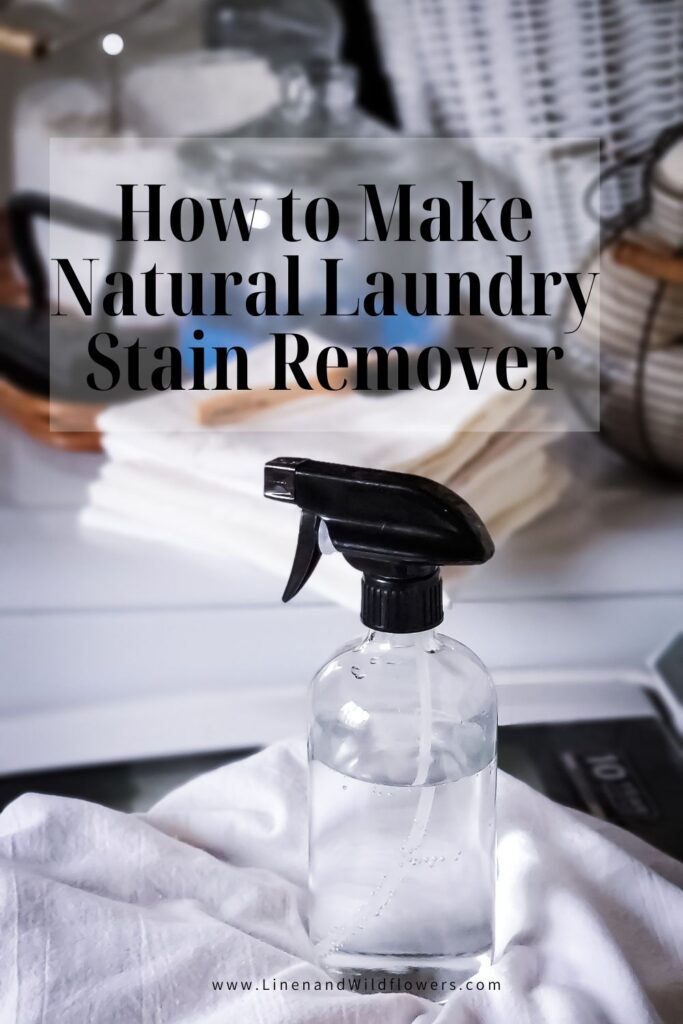
Stains on our favorite clothes can be frustrating, but fret not! With the right homemade laundry stain remover, you can tackle those stubborn stains without breaking the bank. Using simple ingredients and techniques, you can create your own eco-friendly and budget-friendly DIY stain remover home solutions. In this blog post, I will share step-by-step instructions on how to make your homemade laundry stain remover, also tailored to different types of stains. So say goodbye to stains and hello to stain-free clothes with these DIY solutions! Let’s dive in and learn how to conquer those pesky stains once and for all.
Tools needed to make homemade stain remover recipe.
- Spray Bottle
- Tablespoon
- Measuring Cup
How to make Natural Laundry Stain Remover?
Here’s a simple recipe for a natural stain remover using common household ingredients:
What are the required ingredients for making a natural stain remover?
- 1 cup of distilled white vinegar
- 1 cup of water
- 1 tablespoon of baking soda
- Essential Oils (optional)
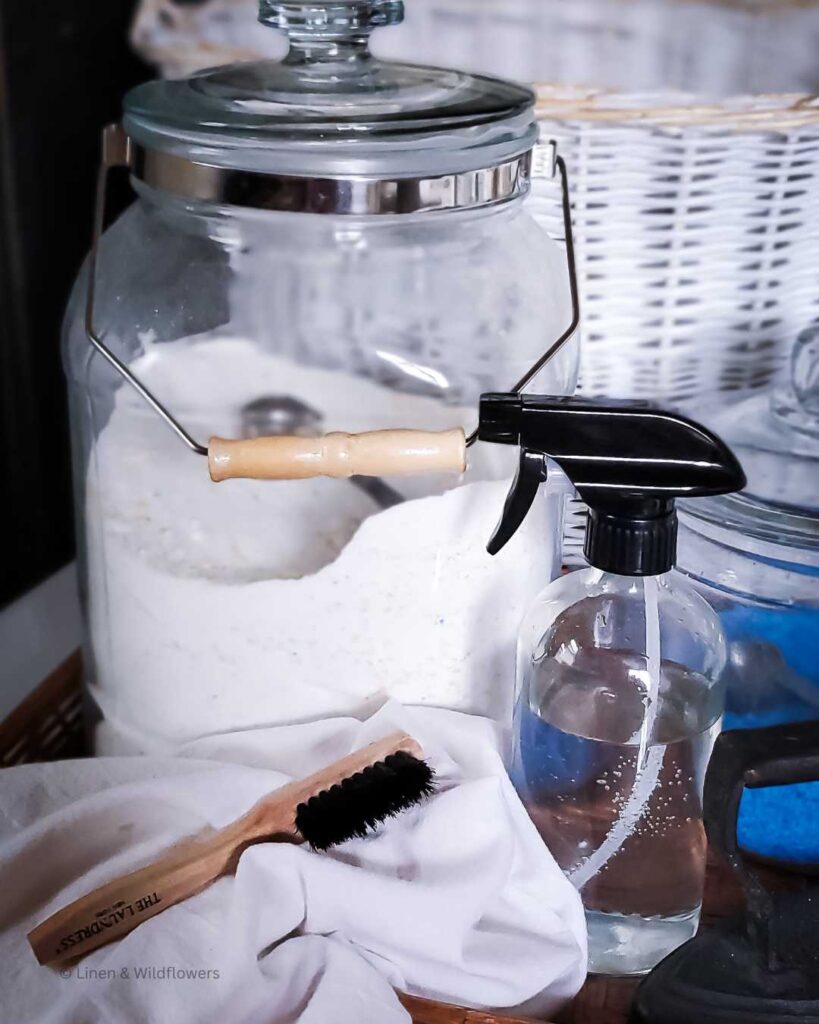
Instructions for making natural laundry stain remover:
- Mix the distilled white vinegar and water in a spray bottle. Vinegar is a natural acid that can help to break down stains and remove odors.
- Add the baking soda to the mixture in the spray bottle. Baking soda is a mild abrasive that can help to lift stains and brighten fabrics.
- Shake the spray bottle gently to mix the ingredients.
- Spray the natural stain remover onto the stain, ensuring to saturate the area thoroughly.
- Let the mixture sit on the stain for 5-10 minutes, allowing it to penetrate and break down the stain before putting it in the washing machine.
- Use a clean cloth or a soft brush to gently scrub the stain, working from the outside towards the center to avoid spreading the stain further.
- Rinse the area with water to remove the stain remover and any remaining residue.
- Launder the fabric as usual, following the care instructions on the garment label.
Please Note: Please Note: Adding baking soda to vinegar and water can cause a chemical reaction, which will cause it to foam out & make a mess.
This simple homemade stain remover spray is effective for a wide range of stains, including grease, food, dirt, and more.
As always, you should spot test on a small, inconspicuous area of the fabric before treating the entire stain; however, this natural stain remover spray is safe to use on most fabrics.
You can be well-equipped to tackle stains and keep your clothes looking fresh and clean with this easy-to-make DIY stain remover spray!
Tip: Don’t have a laundry brush? No problem. An old toothbrush will work in a pinch!

Tips for Using Homemade Laundry Stain Remover
Here’s a step-by-step guide on how to make homemade laundry stain removal solutions with other commonly used household items:
- Gather the necessary materials: You will need a few everyday household items, including a clean white cloth, baking soda, vinegar, dish soap, and water.
- Identify the stain: Determine the type of stain you are dealing with. Different stains require different treatments. For example, grease stains may require a different approach than ink stains or wine stains.
- Blot the stain: Use a clean white cloth to blot the stain gently and remove any excess liquid or debris. Be careful not to rub the stain, which may spread it further.
- Pre-treat the stain: Depending on the type of stain, you can use different homemade solutions to pre-treat it.
- Launder as usual: After pre-treating the stain, launder the garment as you normally would. Use the appropriate water temperature and laundry detergent for the fabric type.
- Check the stain: Once the garment is washed, check the stain to see if it has been completely removed. If not, you may need to repeat the pre-treatment and laundering process.
- After completely removing the stain, you can dry the garment using your usual method. However, if the stain persists, avoid using heat to dry the garment, as heat can set the stain further.
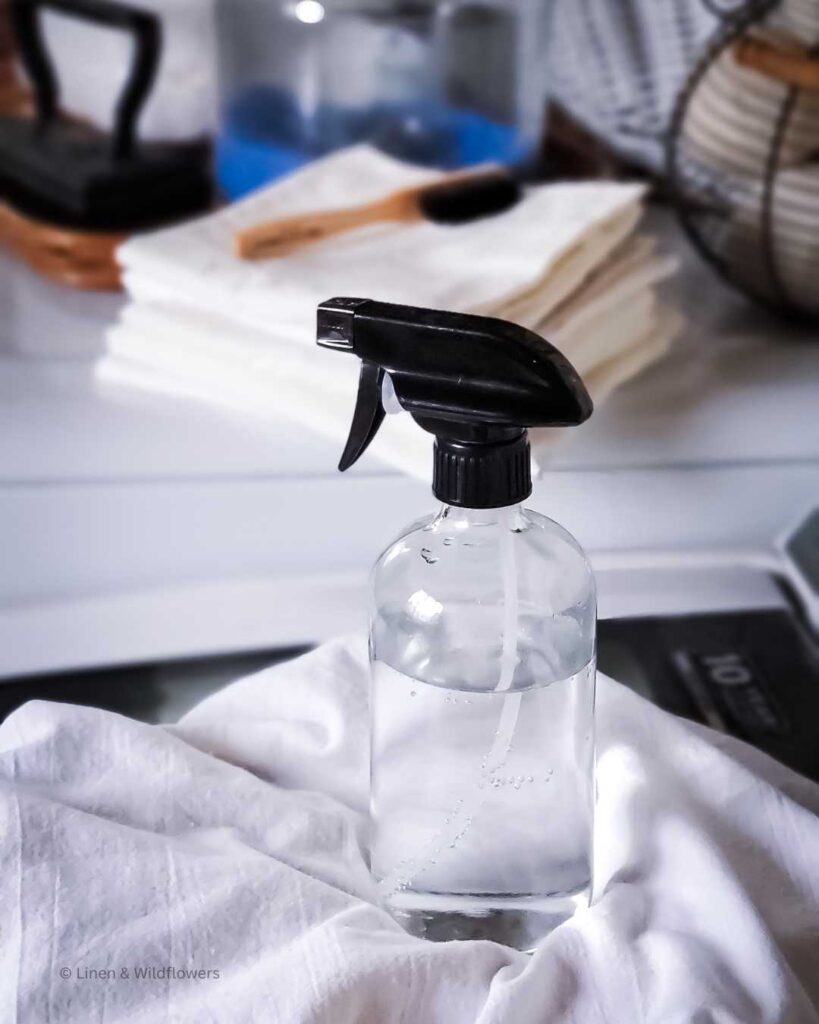
Treat the Tough Stains!
Check out these other options for treating stubborn stains with commonly used household items!
- For greasy stains: Mix equal parts of dawn dish soap and warm water to create a soapy solution. Apply it to the stain and gently rub it with a cloth or soft brush. Let it sit for a few minutes before rinsing it with water.
- For protein-based stains (such as blood or sweat): Mix a cup of hydrogen peroxide and water (1:1 ratio). Apply it to the stain and let it sit for a few minutes before rinsing with water.
- For acidic stains (such as coffee or tea): Mix equal parts of vinegar and water. Apply it to the stain and let it sit for a few minutes before rinsing with water.
- For the toughest stains: (such as blood stains, grass stains & a permanent marker), Make a paste by mixing baking soda and water. Apply it to the stain and let it sit for about 15 minutes before rinsing with water.
Note: It’s always a good idea to spot-test any homemade stain removal solution on a small area that is inconspicuous of the garment before applying it to the stain to ensure it doesn’t cause any damage or discoloration.
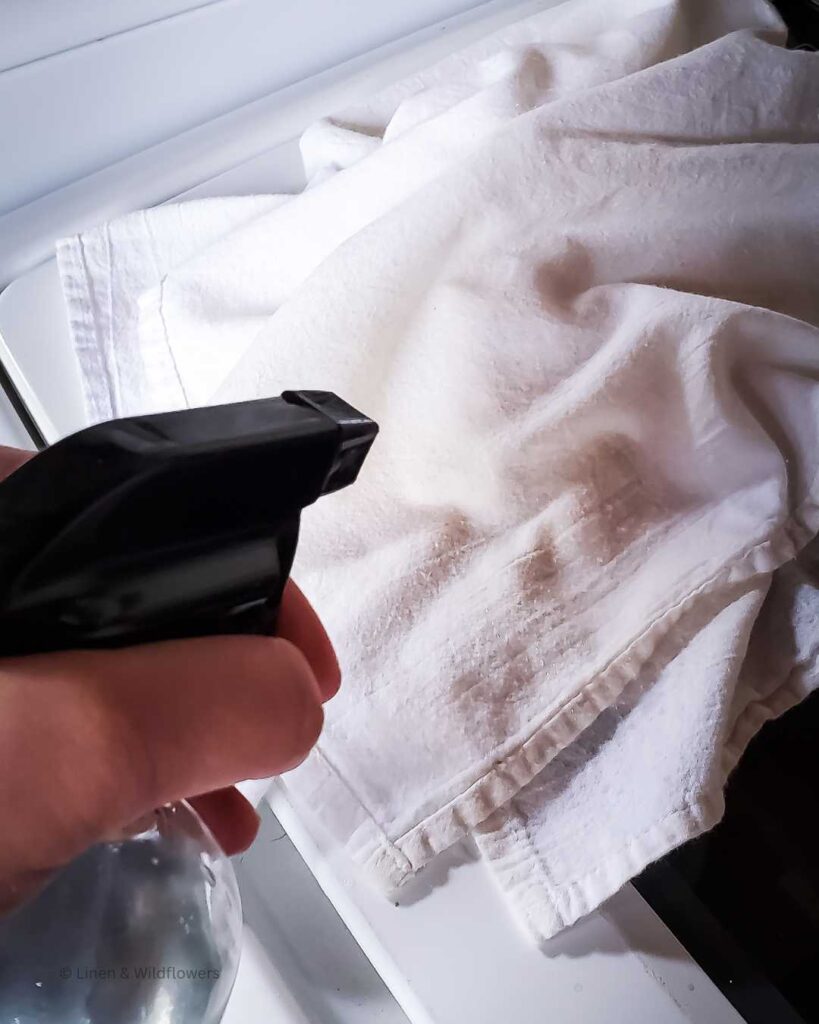
Best Washing Temperature for Tough Stains: Cold Water vs. Hot Water
Using cold water for washing is generally recommended when dealing with tough stains on clothes. Hot water can sometimes set the stain or make removing it more difficult. However, it’s always best to check the garment’s care label and follow the manufacturer’s instructions for washing the temperature to ensure the best results.
What makes this DIY Stain remover better than a store-bought commercial stain remover?
There are several reasons why homemade stain removers can be advantageous compared to store-bought stain removers:
Cost-effective
Making homemade stain removers with inexpensive and readily available everyday household items is a cost-effective alternative to pricey store-bought stain removers.
Eco-friendly
Many store-bought stain removers contain harsh chemicals that can harm the environment. On the other hand, homemade stain removers often utilize natural ingredients, such as vinegar, baking soda, and dish soap, which are eco-friendly and biodegradable.
Customizable
Homemade stain removers can be easily customized to suit different types of stains or fabric materials. In addition, you can adjust the recipe or ingredients to specifically target the type of stain you’re dealing with, such as red wine, grease, or ink, making it a versatile option.
Control over ingredients
With homemade stain removers, you have complete control over the ingredients used, allowing you to avoid any potential allergens or irritants that may be present in commercial stain removers. Particularly beneficial for those with sensitive skin or allergies.
DIY satisfaction
Making your own stain remover can be a fun and fulfilling DIY project, allowing you to take control of your laundry routine and feel accomplished in creating a solution that works for you.
Reduced packaging waste
Store-bought stain removers often come in plastic bottles, contributing to plastic waste. By making your own stain remover at home, you can reduce the amount of packaging waste and promote sustainability.
FAQ
Will a natural stain remover bleach or discolor my clothes?
The potential for bleaching or discoloration of clothes with natural stain removers depends on ingredients, fabric type, and application time. Perform a spot test, follow instructions, and rinse thoroughly to avoid residue and potential discoloration. Delicate fabrics may need extra caution. Consult garment labels or seek professional advice for sensitive fabrics.
How long should I let a natural stain remover sit on the stain?
As a general guideline, most natural stain removers should be applied to the stained area. Allow it to sit for a few minutes to several hours. Also this also depends on the severity of the stain. However, it’s essential to avoid leaving the stain remover on the fabric for too long. It can potentially cause damage or discoloration.
How do I store a homemade natural stain remover, and how long is it effective?
The effectiveness of homemade natural stain removers can vary based on ingredients and storage. It’s best to use them within a few weeks to a few months, make small batches, and discard any that show changes in smell, consistency, or efficacy. To ensure effectiveness, perform a spot test before using it on a larger fabric area.
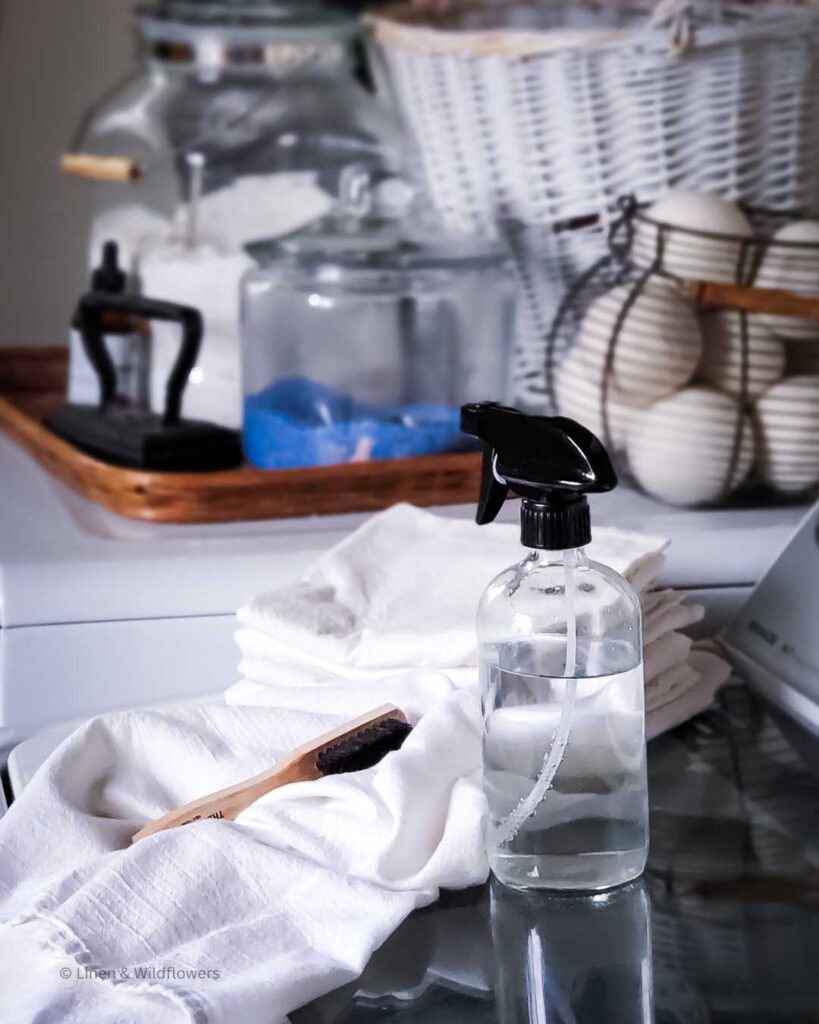
Is a natural stain remover safe for all types of fabrics?
It depends on the specific natural stain remover and fabric type. Performing a spot test is recommended to ensure safety on all kinds of fabrics.
Can I use a natural stain remover on all types of stains, such as red wine, grease, ink, etc.?
The effectiveness of natural laundry stain removers can vary depending on the specific stain. It’s recommended to perform a spot test to ensure effectiveness on different types of stains, such as red wine, grease, ink, etc.
Are there any specific precautions or safety measures I should take when using a natural stain remover?
Take precautions when using a natural stain remover by performing a spot test. Be sure to follow instructions and be cautious with delicate fabrics.
What stains is the Natural Stain Remover good for?
The effectiveness of a natural stain remover can vary depending on the specific ingredients and stain type.
Please Note: Perform a spot test, and following instructions for optimal results is best.
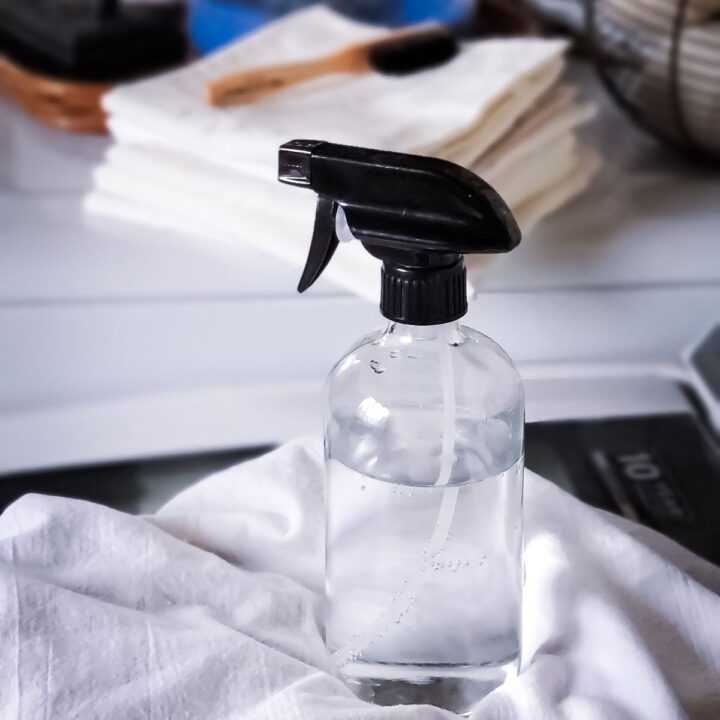
HOW TO MAKE NATURAL LAUNDRY STAIN REMOVER
Materials
- 1 cup of distilled white vinegar
- 1 cup of water
- 1 tablespoon of baking soda
- Essential Oils (optional)
Tools
- Spray Bottle
- Tablespoon
- Measuring Cup
Instructions
- Mix the distilled white vinegar and water in a spray bottle. Vinegar is a natural acid that can help to break down stains and remove odors.
- Add the baking soda to the mixture in the spray bottle. Baking soda is a mild abrasive that can help to lift stains and brighten fabrics.
- Shake the spray bottle gently to mix the ingredients.
- Spray the natural stain remover onto the stain, ensuring to saturate the area thoroughly.
- Let the mixture sit on the stain for 5-10 minutes, allowing it to penetrate and break down the stain before putting it in the washing machine.
- Use a clean cloth or a soft brush to gently scrub the stain, working from the outside towards the center to avoid spreading the stain further.
- Rinse the area with water to remove the stain remover and any remaining residue.
- Launder the fabric as usual, following the care instructions on the garment label.
Notes
Please Note: Adding baking soda to vinegar and water can cause a chemical reaction, which will cause it to foam out & make a mess.
In Conclusion
Homemade stain removers can be cost-effective, eco-friendly & customizable. This satisfying alternative to store-bought stain removers gives you control over the ingredients and reduces packaging waste. Most importantly, using homemade products such as my homemade laundry detergent & all-purpose cleaner has saved me a lot of money.
 If you want to follow along on our home restoration/renovation plans and all of our exciting antique & thrift finds, be sure to check out Linen and Wildflowers on Facebook, Instagram, and Pinterest! And don’t forget to sign up for our newsletter to receive updates.
If you want to follow along on our home restoration/renovation plans and all of our exciting antique & thrift finds, be sure to check out Linen and Wildflowers on Facebook, Instagram, and Pinterest! And don’t forget to sign up for our newsletter to receive updates.





Leave a Reply